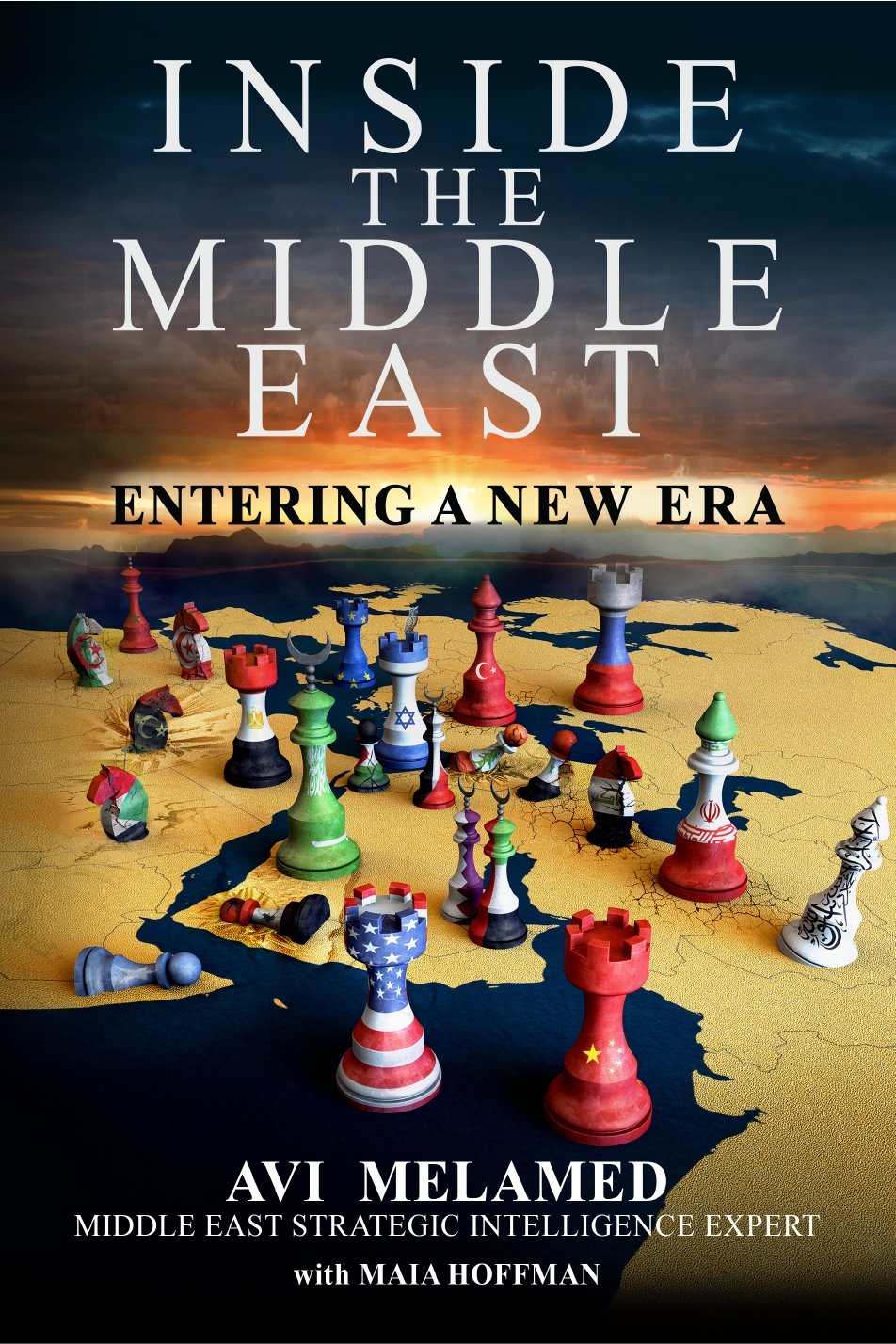|
Getting your Trinity Audio player ready...
|
For warriors, Israel-Hamas clash provides case study for 21st-century urban battles | Avi Melamed’s insights quoted by Ben Wolfgang for The Washington Times – May 6, 2024.
“This war has highlighted the theory of asymmetric warfare, specifically that the larger and more powerful force holds the upper hand over the smaller and less powerful force in battle is essentially flipped in an urban combat environment where the smaller force is entrenched within the battlespace,” Avi Melamed, a former Israeli intelligence official, told The Washington Times.
Israel has struggled to fully destroy Hamas, which was Israeli Prime Minister Benjamin Netanyahu’s stated goal after the Palestinian militant group’s Oct. 7 terror attack that killed more than 1,200 Israelis and resulted in the taking of more than 250 hostages. The group is notorious for embedding its operations inside civilian infrastructure such as schools and hospitals, making it extremely difficult to find and kill combatants without harming innocent civilians — and in the process giving critics fuel to accuse Jerusalem of indiscriminately killing women and children.
But the war also has provided valuable information about how a modern military can minimize civilian deaths with the proper fusion of ground, artillery and aerial assets. Mr. Melamed said that one of the major advances on display in Gaza is the virtual perfection of real-time communications directly between ground commanders, artillery batteries miles away and air support overhead. That means that ground-level intelligence about targets’ locations can be shared in real-time, and strike orders given almost instantaneously.
“When historians look back at Israel’s war in Gaza, they will no doubt focus on Israel’s success in shortening the communications circuit between battlefield commanders and their artillery and air support, creating a more direct conversation between units operating in the same urban battle space and by effect shortening the timeframe between the gathering of field intelligence and the operations it leads to,” he said. “That operational innovation, not specifically a technological one, is likely to be employed by militaries in their future operations.”
TAMPA, Florida — Robotics will play a key role in 21st-century conflicts but face limitations in urban environments or underground operations. Real-time communication between field commanders and air support has been a game-changer. And social media narratives can have a greater influence on the trajectory of a war than perhaps anyone expected.
Those are just a few of the lessons, analysts say, already learned from Israel’s war against the Palestinian terrorist group Hamas in the Gaza Strip.
The clash, now approaching its seventh month, is being studied closely inside the Pentagon and in national security and military circles around the world. Along with the Russia-Ukraine war, the Israel–Hamas conflict is among the first major wars in the age of drones, artificial intelligence and other cutting-edge tools.
But unlike the war in Ukraine, Israel’s battle against Hamas is playing out in one of the most densely populated patches of land on the planet. It is also being waged by one of the most technologically advanced militaries in the world, giving observers the chance to study how modern-day urban conflicts will play out aided by the most advanced war-fighting tools.
Lessons from the Gaza war will be a key topic here at the Special Operations Forces Week conference, organized by U.S. Special Operations Command and the Global Special Operations Forces Foundation. The event is one of the world’s largest gatherings of special operations professionals and defense industry leaders, and it serves as a major showcase of military technologies, and as a forum for large contractors and niche start-ups to demonstrate — and potentially sell — their products.
The technology and products on display here often mirror current conflicts or battles that could erupt in the near future. For example, there has been an increasingly heavy focus on naval capabilities and maritime technology, as war planners inside the Pentagon and in the defense industrial base prepare for a possible U.S. clash with China in the Pacific.
Modern-day battlefields
The Israel–Hamas war also is helping to drive those conversations. From the broadest perspective, specialists say that the conflict has crystallized the modern-day reality that even the best-trained, best-equipped fighting forces lose much of their advantage in urban war zones jam-packed with civilians.
“This war has highlighted the theory of asymmetric warfare, specifically that the larger and more powerful force holds the upper hand over the smaller and less powerful force in battle is essentially flipped in an urban combat environment where the smaller force is entrenched within the battlespace,” Avi Melamed, a former Israeli intelligence official, told The Washington Times.
Israel has struggled to fully destroy Hamas, which was Israeli Prime Minister Benjamin Netanyahu’s stated goal after the Palestinian militant group’s Oct. 7 terror attack that killed more than 1,200 Israelis and resulted in the taking of more than 250 hostages. The group is notorious for embedding its operations inside civilian infrastructure such as schools and hospitals, making it extremely difficult to find and kill combatants without harming innocent civilians — and in the process giving critics fuel to accuse Jerusalem of indiscriminately killing women and children.
But the war also has provided valuable information about how a modern military can minimize civilian deaths with the proper fusion of ground, artillery and aerial assets. Mr. Melamed said that one of the major advances on display in Gaza is the virtual perfection of real-time communications directly between ground commanders, artillery batteries miles away and air support overhead. That means that ground-level intelligence about targets’ locations can be shared in real-time, and strike orders given almost instantaneously.
“When historians look back at Israel’s war in Gaza, they will no doubt focus on Israel’s success in shortening the communications circuit between battlefield commanders and their artillery and air support, creating a more direct conversation between units operating in the same urban battle space and by effect shortening the timeframe between the gathering of field intelligence and the operations it leads to,” he said. “That operational innovation, not specifically a technological one, is likely to be employed by militaries in their future operations.”
New tools
On the technological side, Israel has employed a host of cutting-edge tools, sometimes sparking even more outrage in the Arab world, among the political left in the U.S. and Europe, and in other quarters.
Israel, for example, has aggressively disputed assertions that it is using an artificial intelligence system for a targeted killing program that tolerates civilian deaths as acceptable collateral damage.
Explosive allegations that Israel has a secret AI-powered killing machine called “Lavender” emerged in news reports last month, which cited anonymous intelligence sources involved in the Hamas–Israel war.
The Israel Defense Forces said that it does not use AI to designate people as targets for military strikes.
“Contrary to claims, the IDF does not use an artificial intelligence system that identifies terrorist operatives or tries to predict whether a person is a terrorist,” the IDF said in a statement last month. “Information systems are merely tools for analysts in the target identification process.”
Israel has relied on other tools that the U.S. and other nations could potentially use in their own future urban operations, though some have had limited success. For example, Israel has reportedly used robot dogs and other robotics throughout Gaza. Ukraine, too, has successfully employed robotic ground vehicles in its war with Russia.
But specialists say those robots, with relatively limited range and other limitations, aren’t yet able to fully replace the missions assigned to human soldiers, such as finding and clearing out the vast tunnel networks Hamas has built beneath Gaza.
“To me, Gaza underscores the limitations of robotics, especially underground. We see them doing great things in Ukraine. But they aren’t able to search tunnels as swarms in Gaza very well, it would appear,” said Michael O’Hanlon, senior fellow and director of research in foreign policy at the Brookings Institution.
For warriors, Israel-Hamas clash provides case study for 21st-century urban battles | Avi Melamed’s insights quoted by Ben Wolfgang for The Washington Times – May 6, 2024.
Follow me on Twitter @AviMelamed; Facebook @InsideTheMiddleEast; for more Videos on YouTube https://www.youtube.com/c/AviMelamed
“Jerusalem bridge-builder revisits intifada hot spots for new streaming series” Article by Mike Wagenheim about our latest Docuseries The SEAM LINE with Avi Melamed
Full article here in The Jewish News Syndicate


If you want to have a better understanding of the news and what really drives the unfolding events…
Read the latest book by Avi Melamed,
INSIDE THE MIDDLE EAST | ENTERING A NEW ERA, available now >>>
I can always be reached at Av*@********ed.com































































